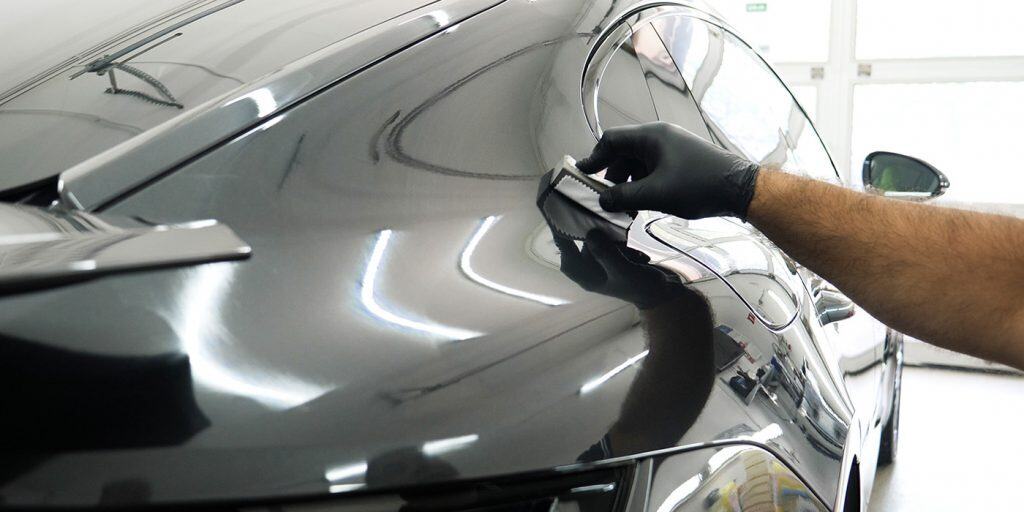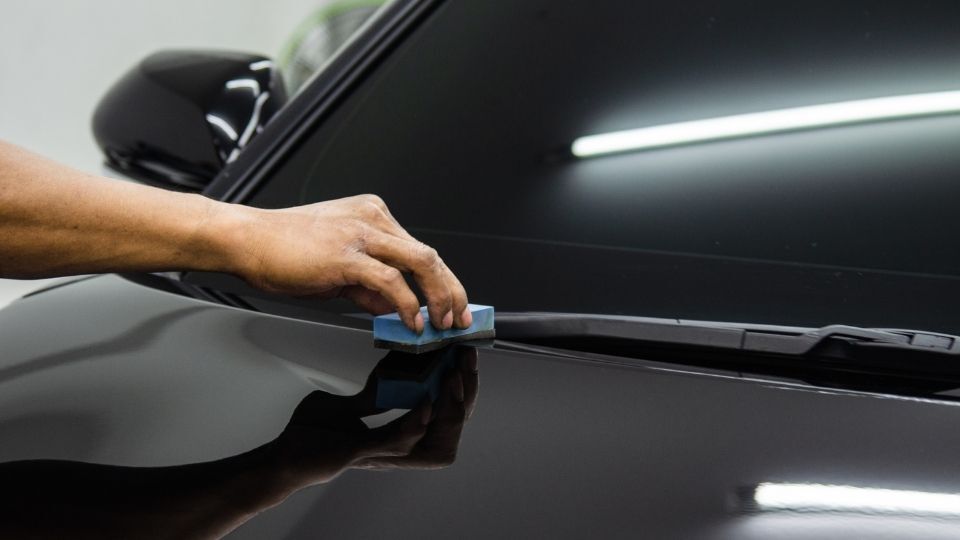How Ceramic Coating Enhances Your Vehicle's Protection and Appearance
Ceramic Finish vs. Typical Wax: Which Supplies Better Long-Term Defense?
The discussion between ceramic finishes and conventional wax for car security has actually amassed substantial interest among vehicle fanatics and experts alike. While both satisfy of protecting paint, their distinctions in resilience, application, and long-lasting maintenance expenses might affect a customer's selection. Ceramic finishings flaunt premium long life and resistance to ecological aspects, yet the intricacy of their application elevates inquiries concerning availability and practicality. As we check out these contrasting alternatives, it comes to be necessary to think about not only the immediate benefits yet also the implications for vehicle treatment in time.
Introduction of Ceramic Layer
Ceramic finish has obtained substantial appeal among vehicle enthusiasts and detailers alike as a result of its innovative protective top qualities. This innovative modern technology is made to develop a long lasting, hydrophobic guard over a car's paint surface, considerably boosting its resistance to environmental impurities such as dirt, UV rays, and chemical spots. Unlike typical wax, which offers a temporary layer of security, ceramic finishings bond at a molecular degree with the paint, offering lasting resilience-- often expanding beyond 2 years with proper upkeep.
The application process involves careful prep work of the vehicle's surface area, including cleaning and brightening to ensure ideal attachment. As soon as used, the finishing cures to form a durable layer that not just includes depth and gloss to the paint but additionally streamlines maintenance. With its hydrophobic homes, ceramic layer enables water and dirt to move off even more quickly, lowering the regularity of washes and minimizing the danger of swirl marks.
Moreover, ceramic coverings are offered in different formulations, enabling individuals to choose products tailored to their details needs and choices. On the whole, ceramic coating represents a substantial development in paint protection technology, delivering remarkable performance compared to standard alternatives.
Summary of Standard Wax
Commonly considered a staple in auto treatment, wax works as a prominent choice for those seeking a simple technique to improve and safeguard their lorry's paint - ceramic coating. Automotive wax generally comprises natural active ingredients, such as carnauba, or artificial compounds, made to produce a protective layer on the surface of the paint. This layer not only enhances the lorry's gloss and radiate but also provides an obstacle against ecological impurities
The application of wax is normally user-friendly, making it available for both experts and DIY lovers. Once used, wax needs a healing period, after which it solidifies to develop a protective covering.
Nonetheless, while wax works for enhancing the aesthetic appeal of a vehicle, it is essential to note that the defense it provides may demand extra regular reapplication contrasted to different products, such as ceramic layers. On the whole, traditional wax stays a preferred choice for those prioritizing simplicity of usage and immediate visual improvement.
Durability and Durability Comparison
While both ceramic coatings and typical wax offer protective advantages for automobile paint, their resilience and longevity differ substantially. Conventional wax, normally made from all-natural carnauba or artificial polymers, normally offers a safety layer that lasts around 3 to 6 months. This reasonably short lifespan demands normal reapplication to preserve ideal security.
In contrast, ceramic finishes are engineered from innovative nanotechnology, creating a covalent bond with the paint surface area. This leads to a robust, hydrophobic layer that can withstand for two to five years, depending on the item and ecological conditions. The exceptional toughness of ceramic finishes is connected to their chemical framework, which uses improved resistance to scratches, UV rays, and oxidation.

Protection Versus Environmental Factors
Safeguarding a vehicle's paint from ecological aspects is crucial for preserving its look and value over time. Autos are continuously revealed to a variety of aspects, including UV rays, bird droppings, tree sap, acid rainfall, and road gunk, every one of which can endanger click here for more info the integrity of the paintwork.
Ceramic layers offer a durable protection against these environmental assailants. Unlike traditional wax, which can deteriorate quickly under UV exposure, ceramic coatings develop a long lasting, hydrophobic layer that stands up to the damaging results of sunshine and toxic wastes. This sophisticated modern technology develops a chemical bond with the vehicle's surface, using superior protection that lasts for years, also in severe conditions.
Standard wax, while easier to use, typically calls for constant reapplication and offers restricted resistance to impurities and UV rays. continue reading this Over time, it can break down, leaving the paint prone to scrapes and oxidation. On the other hand, ceramic coatings maintain their safety qualities longer, significantly decreasing the threat of paint damages and ensuring that the automobile preserves its visual allure. As a result, ceramic coverings are progressively identified as the premium option for long-term defense versus environmental aspects.
Application and Maintenance Distinctions
The approaches of application and subsequent upkeep for ceramic layers and conventional wax differ dramatically, affecting the total user experience and performance of each item. Ceramic coatings need an even more complex application procedure, normally entailing surface area prep work that consists of cleaning, decontaminating, and polishing the car. As soon as the surface is all set, the ceramic layer is used in a regulated setting, typically requiring professional experience to make sure appropriate healing and bonding to the paint.

While both products enhance automobile look, the longer-lasting protection provided by ceramic finishings might validate their preliminary financial investment, despite the more requiring application procedure. Conversely, traditional wax stays a prominent option for those seeking an easier, albeit short-term, remedy.

Conclusion
Finally, ceramic layers show significant advantages over conventional wax in terms of sturdiness and environmental management. With a life-span expanding 2 to 5 years and premium resistance to UV rays, dust, and chemical discolorations, ceramic finishes provide a much more efficient service for long-lasting automobile upkeep. The application process might require expert experience, the resulting price financial savings and reduced frequency of reapplication highlight the value of ceramic coverings for those looking for optimal vehicle defense.
The discussion in between ceramic finishings and standard wax for vehicle defense has gathered substantial focus amongst automobile fanatics and experts alike. Unlike conventional wax, which supplies a momentary layer of protection, ceramic coatings bond at a molecular degree with the paint, supplying durable sturdiness-- frequently expanding beyond two years with proper maintenance.
While both ceramic coatings and standard wax deal safety benefits for auto paint, their sturdiness and longevity differ significantly. For vehicle enthusiasts seeking lasting protection, ceramic finishings offer an engaging advantage over conventional wax items.
In conclusion, ceramic finishes demonstrate considerable benefits over conventional wax in terms of toughness and ecological defense.